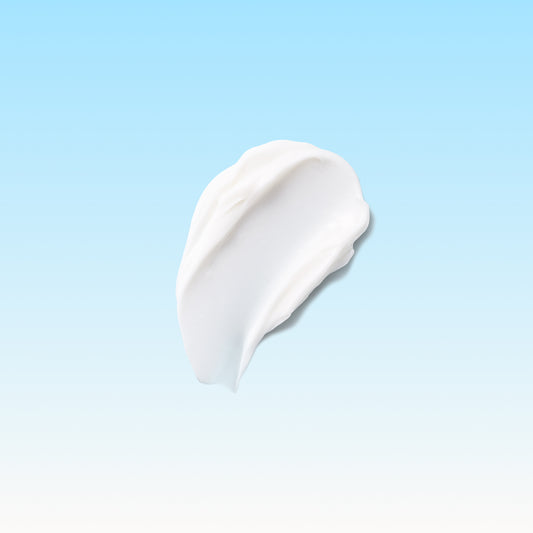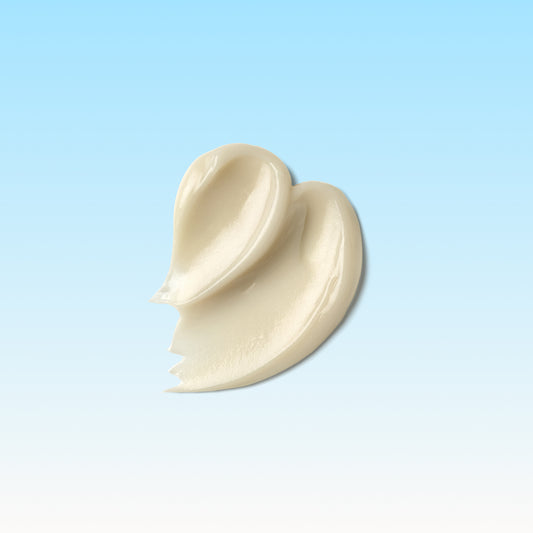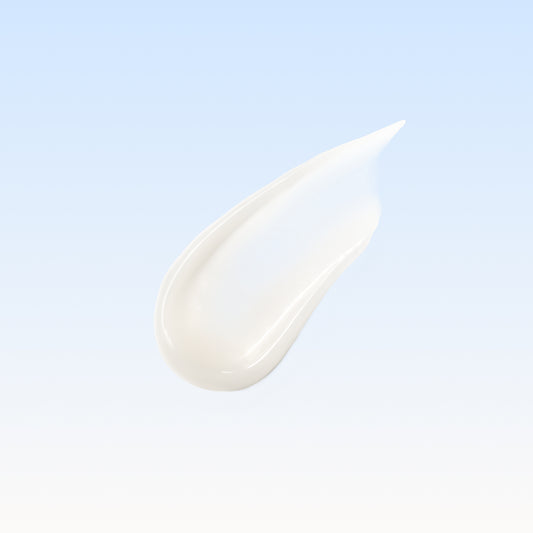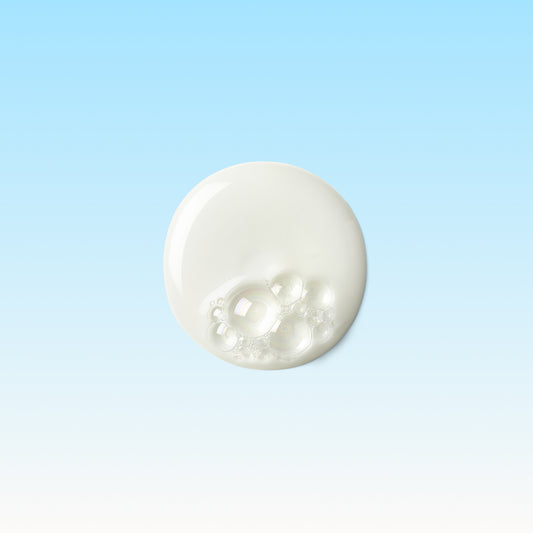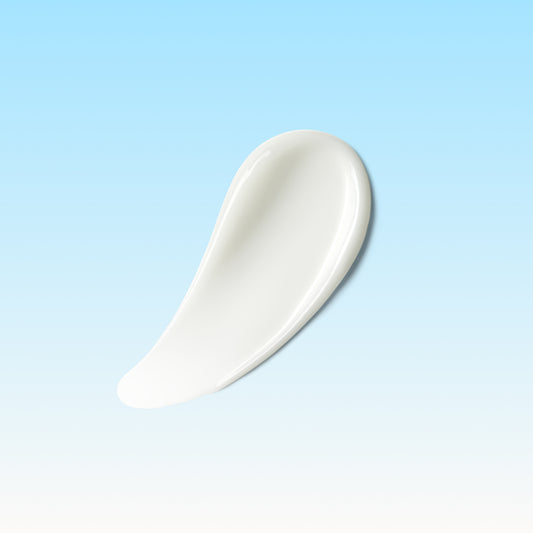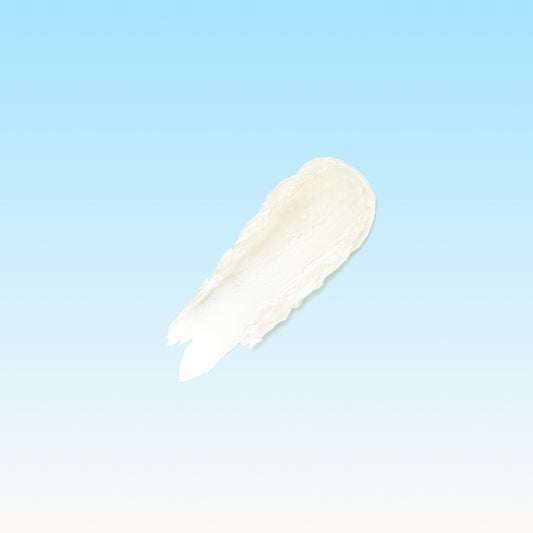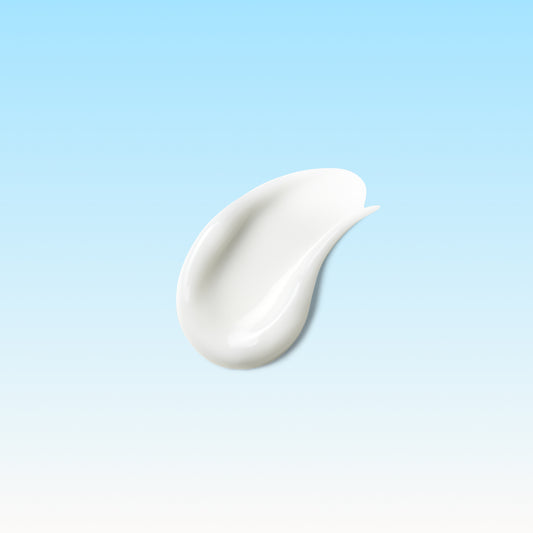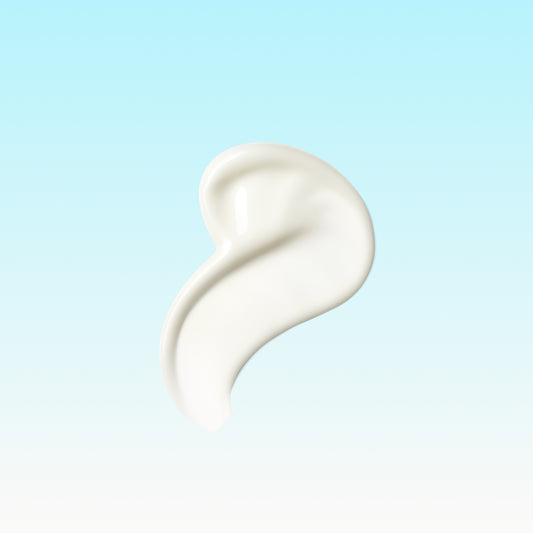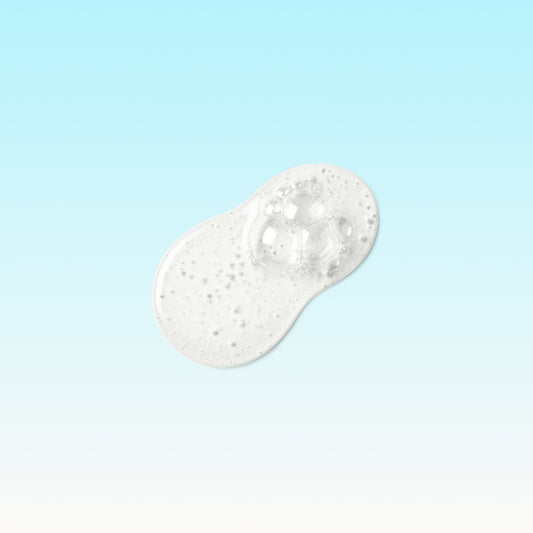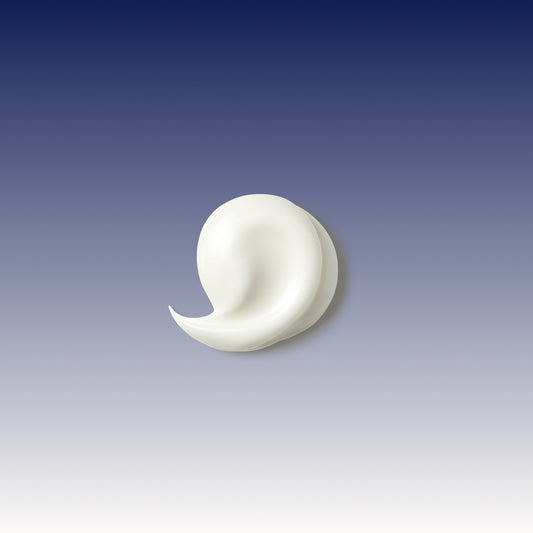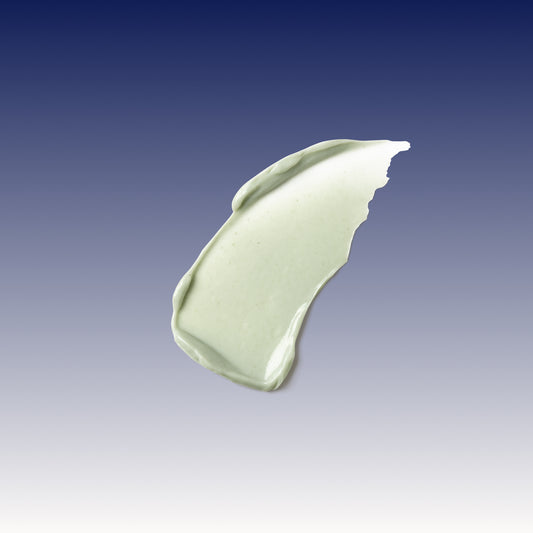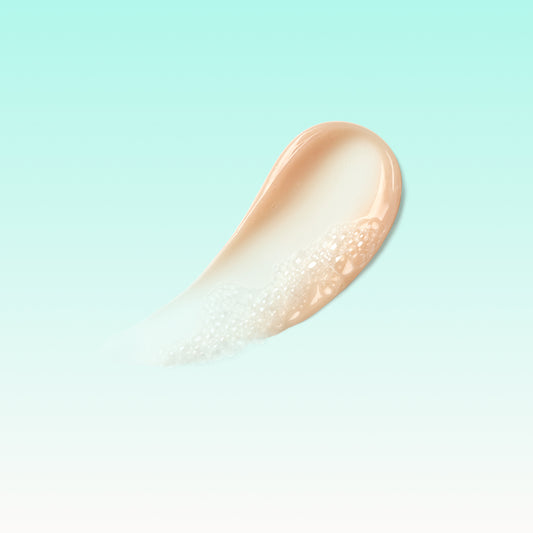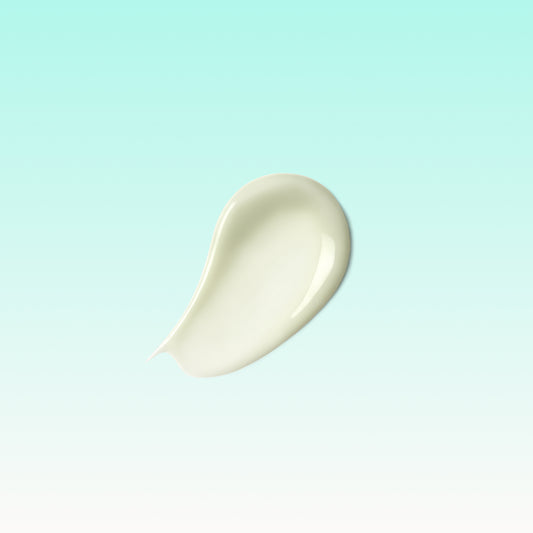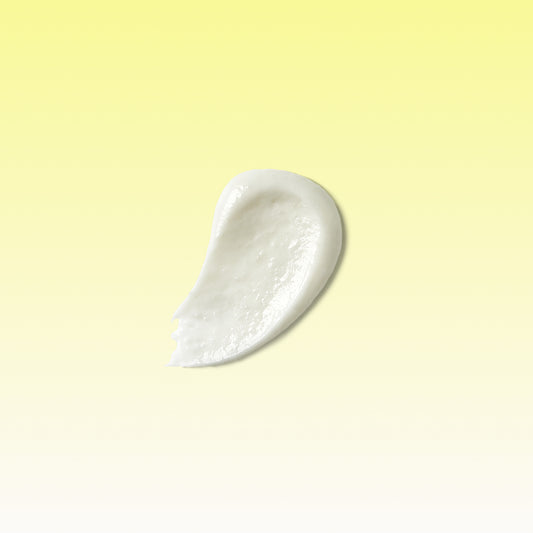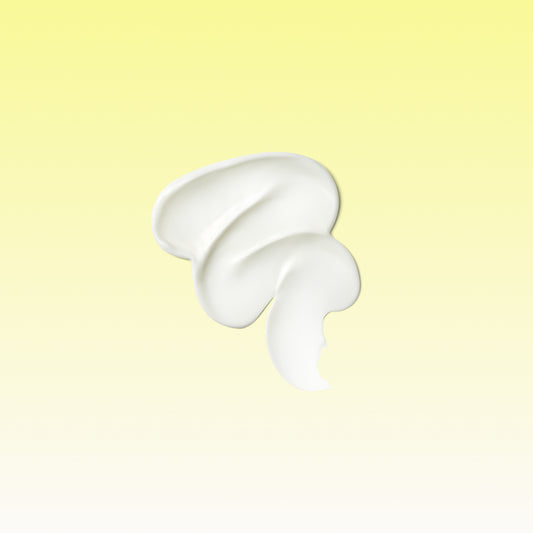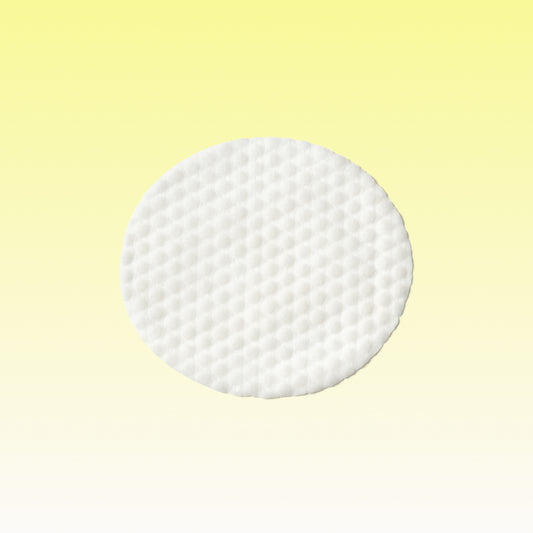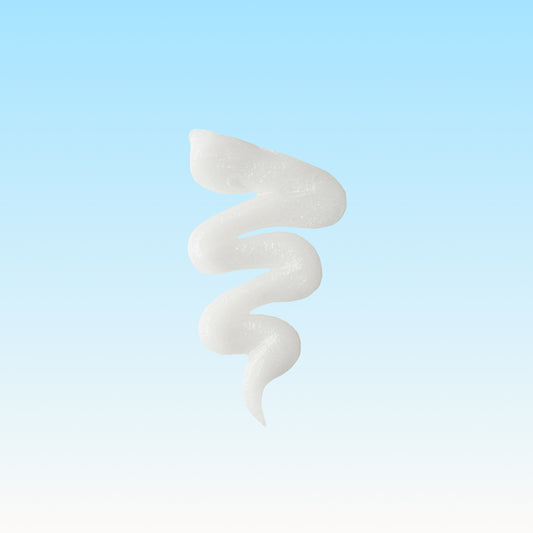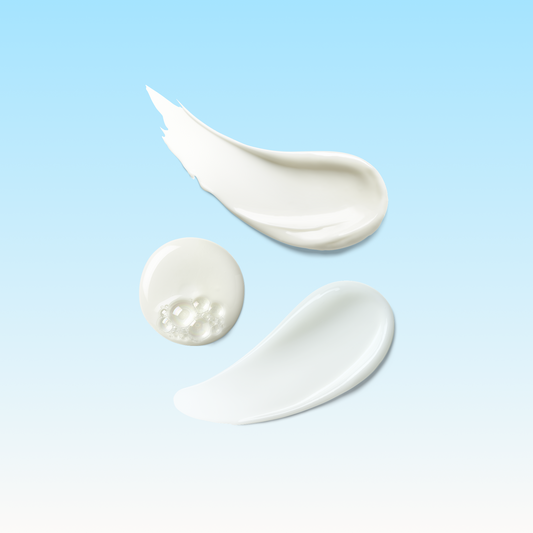Best Skin Barrier Ingredients

A poorly functioning skin barrier directly contributes to the symptoms of dry skin, atopic dermatitis, psoriasis, acne, allergies, and contact dermatitis. Therapies for a damaged skin barrier include gentle hygiene, moisturizing lotions and creams, and topical and oral drugs. Of course, while we hope that this information is helpful, if you have a skin condition or disease, you’ll want to discuss any questions or treatment with your dermatologist.
Moisturizers have been formulated with mixtures of lipids mimicking those found on the surface of the skin. Lipids on the surface of the skin come primarily from sebum plus smaller amounts from the stratum corneum.
Skin-similar lipids include squalene, waxes, triglycerides, and fatty acids, plus some ceramides and cholesterol. Jojoba oil is used as a source of waxes in skin-similar lipid mixtures. Coconut oil, macadamia oil, or other fats and oils may be used as sources of triglycerides and fatty acids.
Lipid mixtures have also been utilized that mimic those of the stratum corneum and contain ceramides, cholesterol, and fatty acids.
Moisturizers help maintain skin hydration, soothe the skin, and reduce the need for anti-inflammatory drugs. Some moisturizers may increase the lipid content of the stratum corneum by promoting optimal conditions for lipid production, and possibly by supplementing with fatty acids.
In a study described in detail below, a regimen providing a spectrum of skin-similar lipids was shown to increase levels of total lipids, ceramides, and free fatty acids in the skin of 35 to 50 year-old women. In another study, a lotion containing glycerol and free fatty acids was able to increase the levels of ceramides, cholesterol, and free fatty acids in the stratum corneum of people with dry skin. It’s likely that some of the free fatty acids in these products were used for the production of other lipids.
Squalene
Squalene is a natural triterpene lipid that makes up about 13 percent of sebum secreted by sebaceous glands and is a significant component of skin lipids. In skin care products, squalene provides hydration and is an emollient that provides suppleness and flexibility.
Squalene’s most important attribute is that it is an antioxidant that prevents free radical damage. It’s hypothesized that the relatively high level of squalene in human skin, relative to other mammals, is because being relatively hairless we require additional protection from UV radiation. Squalene may contribute to this protection, helping to prevent damage to the skin barrier from the sun and other environmental stressors.
Jojoba Oil
Jojoba (Simmondsia chinesis) seed oil is an unusual liquid wax similar to that in human sebum. It is uniquely stable compared to most oils. Jojoba oil possesses antioxidant, antimicrobial and anti-inflammatory activities, and has been used traditionally by indigenous Americans for hair and skin care, particularly for acne.
Coconut oil
Coconut (Cocos nucifera) oil and ingredients derived from it can support barrier health and aid barrier repair. In a controlled study, the topical use of virgin coconut oil significantly improved skin health in preterm infants, who have an immature skin barrier. In a second controlled trial, coconut oil was demonstrated to improve skin hydration in people with very dry skin.
And a specific form of coconut oil was shown in one study to significantly boost skin health and barrier function in children with atopic dermatitis. To make this product, virgin coconut oil was treated with enzymes to release fatty acids, resulting in a clear, colorless liquid. A second study tested a virgin coconut oil that was fermented with bacteria to release fatty acids. This product stimulated cultured human skin to make components of the skin barrier plus collagen.
Coconut oil contains fats that are broken down in the gut or on the skin to yield lauric acid (a fatty acid) and monolaurin (glyceryl monolaurate), both of which have antimicrobial properties. In particular, monolaurin can inhibit the growth of S. aureus, which is often associated with eczema and a damaged skin barrier. Clinical studies have shown that monolaurin can inhibit the growth of S. aureus in the vagina and in the nose, two places it tends to colonize.
Macadamia Oil
Macadamia (Macadamia integrifolia) nut oil contains triglycerides made of monounsaturated and saturated fatty acids plus bioactive compounds such as tocopherols, phytosterols, squalene, and polyphenols.
Shea butter
Shea butter (Vitellaria paradoxa, formerly Butyrospermum parkii) contains triglycerides primarily composed of monounsaturated fatty acids. It is rich in triterpenes, tocopherol, phenols, and sterols that possess anti-inflammatory and antioxidant properties.
Sunflower Seed Oil
Sunflower (Helianthus annus) seed oil contains tocopherols, phytosterols, and fatty acids, and possesses anti-inflammatory activity. It has been shown to improve skin hydration and to preserve skin barrier integrity in adults. Both almond oil and sunflower seed oil have been shown to improve skin hydration in preterm infants, who have an immature skin barrier. In a blinded, controlled study the oils were applied to the entire body except for the face four times daily. Both oils also improved scores of dryness and redness.
Almond Oil
Sweet almond (Prunus Amygdalus Dulcis) oil has been used traditionally to improve skin texture, promote skin elasticity, and treat dry skin. It is used safely as an emollient, emulsifier, and occlusive agent in cosmetic products. Almond oil has been the subject of multiple research studies, a number of which have reported benefits for skin that is dry and itchy.
Skin-Similar Lipids
A lipid mixture, L-22, was created that mimics the skin surface lipids of healthy 22-year-old women, and when tested on dry or aged skin, it was found to significantly improve barrier health, skin hydration, and elasticity.
In order to assess the composition of healthy skin lipids, samples were collected from the 22-year-old women’s foreheads. The samples were found to contain, from most to least, glycerides, free fatty acids, squalene, wax esters, cholesterol esters, and cholesterol. Jojoba oil, macadamia oil, squalene and phytosterols were used to formulate a mixture of similar composition. Plant sterols (phytosterols) were used in place of cholesterol.
Four separate experiments showed that treating skin with the skin-similar lipids improved skin barrier function and skin hydration in dry or aged skin. The skin-similar lipids were significantly more effective—immediately and over the long term—than olive oil or common moisturizer ingredients at increasing skin hydration and reducing water loss. And in aged skin, elasticity and firmness were significantly higher after one week’s use of the skin-similar lipids.
[H3] Ceramides and Stratum Corneum-Mimicking Lipid Mixtures
Moisturizers containing ceramides have been shown to improve the integrity of the stratum corneum. Ceramides, cholesterol, and fatty acids are essential lipid components of the stratum corneum. They form an impermeable matrix surrounding cells, and when they are depleted, barrier function is reduced. In eczema, psoriasis, and aged skin, ceramide is depleted, lipid levels are low, and this is associated with a dysfunctional skin barrier. In addition to low ceramide content, reduced barrier function is also associated with abnormal types of ceramides.
Ceramides, cholesterol, and fatty acids have been used singly or in mixtures to treat skin with a damaged barrier. Much of this research has been done in eczema, but the hope is that therapies to support barrier health will be useful in multiple skin conditions.
Ceramides are large molecules and generally sit on the surface of skin, although with ingredients that enhance permeation some ceramide may enter the stratum corneum, especially in dry skin. Short saturated fatty acids are somewhat smaller and may provide substrate for the skin to produce the longer fatty acids it needs.
Mixtures of these three lipids at ratios of 1:1:1 (one molecule of each) and 3:1:1 (ceramide-enriched) have been referred to as physiological lipids. Used topically, a mixture of ceramides, cholesterol, and fatty acids in a ratio of 3:1:1 has been reported to be helpful for skin therapy. In children with atopic dermatitis, a moisturizer containing physiological lipids enriched in ceramide was shown to improve the integrity and hydration of the stratum corneum and reduce water loss. Additional studies have found that physiological lipids reduce symptoms in people with atopic dermatitis, but further research is needed to verify and understand possible benefits for skin barrier function.
[H3] Topical Niacinamide
Niacinamide is a form of the B vitamin niacin. Consuming enough of this vitamin is important for skin health as discussed below, but niacinamide is also used topically to promote skin health.
One clinical study reported that a cream containing 2 percent niacinamide improved skin barrier function and hydration in people with rosacea. Another clinical study in women 35 to 60 found that a lotion containing a chemically modified niacinamide (myristoyl nicotinate) improved barrier function in photoaged skin. Water loss was reduced and the thickness of the stratum corneum was significantly increased. And several studies of face creams containing 4 to 5 percent niacinamide have demonstrated improved appearance after 12 weeks of use, including reductions in wrinkles and roughness.
In cultured skin cells, niacinamide supports the formation of barrier components including ceramides, fatty acids, cholesterol, and the proteins filaggrin and involucrin.
Colloidal Oatmeal
Oats (Avena sativa) have been used topically for centuries to treat dry skin, itching, irritation, and rashes. So, it is not surprising that research has revealed barrier-boosting properties. Most research has been carried out on colloidal oatmeal, which is made by very finely grinding whole oats.
In 2003 the FDA approved colloidal oatmeal as an OTC ingredient that is safe and effective as a skin protectant, to "temporarily protect and helps relieve minor skin irritation and itching due to rashes, eczema, poison ivy, oak, or sumac, and insect bites."
The OTC ingredient must pass a number of quality control tests and is soothing, cleansing, moisturizing, and anti-inflammatory. It contains starches and beta-glucans that swell and hold water. Saponins provide cleansing properties, and phenols provide antioxidant and anti-inflammatory activities.
To elucidate how colloidal oatmeal may be working, skin cells grown outside of the body were treated with it, and barrier-building processes were monitored. It was shown to promote production of proteins used in barrier formation, and to help retain barrier function in the face of inflammation.
In addition, just as oat fiber is a prebiotic food for gut bacteria, colloidal oatmeal appears to be a prebiotic that may support the growth of skin bacteria and their production of lactic acid. Lactic acid is a component of NMF that supports hydration and a desirable skin acidity, and it is made by skin cells and bacteria. A lotion containing colloidal oatmeal was found to increase the amount of lactic acid on skin. By contributing to an acidic pH, colloidal oatmeal will boost multiple aspects of barrier function.
Peptides
Bioactive peptides may be derived from proteins including rice bran protein. The peptides— short chains of amino acids—have properties unique to the type of protein and to the way the peptides are produced and purified. Some rice peptides have antioxidant activities, and preliminary research suggests that some are able to inhibit enzymes associated with aging skin: enzymes that break down hyaluronic acid in skin and that cause skin pigmentation. And preliminary research suggests that rice peptides can increase the production of hyaluronic acid by keratinocytes.
Allantoin and Urea
Allantoin and urea provide humectant, osmolyte, moisturizing, and healing support for the skin barrier. Under dry conditions, urea and allantoin can help take the place of water inside cells, protecting them from osmotic stress. Topically applied urea reduces water loss and improves water retention by the skin, and preliminary evidence suggests that the same is true for allantoin. Urea may reduce skin sensitivity to certain irritating compounds and stimulate keratinocytes to produce antimicrobial peptides and lipids. However, urea at levels of 5 percent or more may cause stinging and irritation, especially in sensitive skin, and may break down and release compounds with an unpleasant odor. Allantoin is less irritating than urea and may be a better option for sensitive skin. Allantoin is valued for its moisturizing, smoothing, and healing properties and may be used as a skin conditioning agent and protectant.
Moisturizers containing urea have been shown to be helpful in improving barrier health and reducing symptoms in skin with atopic dermatitis and psoriasis. And high concentrations of urea have been shown to boost barrier function in very dry skin (xerosis) and psoriasis. In controlled clinical trials, urea-based creams have been shown to improve hydration and reduce flaking, roughness, and redness in ichthyosis vulgaris, which is caused by mutations in the barrier protein, filaggrin.
Nutrition For The Skin
Water Intake and Hydration
Hydration is crucial for healthy skin, but there’s more to it than maintaining plumpness and smoothness. Water is needed to moisturize the proteins in the stratum corneum, keeping them elastic and resistant to breakage so that the barrier is intact and skin doesn’t crack. Water is needed to keep enzymes working to produce proteins and lipids that form the barrier.
And there’s a positive feedback loop: Hydration keeps skin healthy, and able to perform one of its most important functions which is to prevent potentially dangerous loss of water. When sizable areas of the skin barrier are destroyed, such as in people who have large areas of burned skin, water loss is extensive and dangerous, and hydration is a crucial part of therapy.
But don’t get carried away—like most things nutritional, moderation is best. Both overhydration and underhydration can be fatal. There is no evidence that we need to drink eight glasses of water daily, and the claim that coffee and other beverages (including beer in moderation) don’t count toward water intake have been disproven. The Food & Nutrition Board of the National Academies of Science say that for most people it works to drink water with meals and otherwise let thirst be the guide. Healthy women consume around 72 ounces (9 cups) of beverages including juices and coffee per day, and get another 18 ounces from foods.
Essential Fatty Acids
Polyunsaturated fatty acids are essential in our diets for every cell and tissue in the body including skin. Classic symptoms of essential fatty acid deficiency are a dry scaly rash and hair loss. The two essential fatty acids are found in many foods and deficiencies are uncommon, but deficiency can occur when fat absorption is compromised, such as in cystic fibrosis or celiac disease, or after bariatric surgery.
Since the value of omega-3 fats has been extensively publicized, it is may not be surprising to hear that one of the EFAs is an omega-3. The essential fatty acid ALA, alpha-linolenic acid, is found in nuts, seeds, and soy and canola oil.
The second EFA is an omega-6 fat, linoleic acid, which is found in most vegetable oils and animal products. Both EFAs support skin health and are associated with good heart health. Linoleic acid is an important component of the stratum corneum lipids.
Vitamins and Minerals
Like other tissues, skin requires all of the essential vitamins, minerals, fats, and amino acids. A deficiency of the B vitamin niacin causes the disease called pellagra, with a dark red rash. Women need about 14 milligrams per day to avoid deficiency. A vitamin B2 (riboflavin) deficiency causes scaly patches on the head, and a B6 (pyridoxine) deficiency causes a red, scaly rash. Less than two milligrams daily of these vitamins will prevent a deficiency.
Vitamin C provides antioxidant support for the skin to help protect against UV light, photoaging, and damage to collagen and DNA, and it is necessary for collagen production. Without it the skin is fragile and wounds do not heal. The RDA for vitamin C is about 75 milligrams for women, and supplements of 100 milligrams or more have been used to boost free-radical-scavenging activity in the skin.
Whereas vitamin C is water soluble, vitamin E is found in the fatty membranes in cells, where it protects lipids, especially unsaturated fatty acids, from free radical damage. The RDA for women is around 23 international units (IU) (15 milligrams) and it’s best to limit supplements, typically alpha-tocopherol, to less than 150 IU.
Vitamin A, zinc, and selenium are necessary for keratinocytes, and copper supports collagen and elastin production for skin firmness and elasticity. Recommended daily intakes for adults for vitamins and minerals are summarized on the Harvard School of Public Health’s website, and more detailed recommendations for different age groups can be found on the NIH’s Office of Dietary Supplement’s website.
A diet containing a wide variety of unrefined whole foods provides these nutrients. However, many of us get a substantial portion of our calories from refined foods depleted of nutrients. And it is extremely common for people—because of sunscreen, lack of time outside, or clothing—to miss out on the little bit of sun needed to catalyze vitamin D production by the skin.
Preliminary research suggests that vitamin D supplements (2000 to 4000 IU daily) may help support ceramide production in the body. And a large body of research has demonstrated that niacinamide supplements support healthy skin.
Niacinamide—The Skin Vitamin
Niacin is a B vitamin—used to make the cofactor NAD— that is essential for all cells to grow, replicate, produce lipids and proteins, and much more, but it is particularly important for skin health. In the form of niacinamide, this vitamin is used both topically and orally to promote skin health in amounts far greater than we would consume in a healthy diet.
Niacinamide supplements have been demonstrated to help protect the skin from photodamage. Most vitamins are best consumed in amounts similar to what would be obtained from a healthy whole-foods diet, amounts that are considered physiological. Niacin appears to be an exception to this rule. High doses of niacinamide (500 to 1000 milligrams per day) have been shown to significantly protect skin from sun damage, reducing actinic keratoses and nonmelanoma skin cancers, and this has been demonstrated in several large double-blind, placebo-controlled clinical trials. Niacin keeps cells healthy by promoting repair of DNA, and it also promotes immune surveillance in the skin to remove damaged cells.
Protecting The Skin From Excessive Sunlight
Using sunscreen and protective clothing is the first line of defense against UV damage to the skin barrier. The stratum corneum is our body’s first line of defense against UV light, absorbing much of the UVB radiation we are exposed to. However, the stratum corneum pays a significant price for protecting deeper layers of skin from solar radiation.
Some ways in which excessive sunlight damages the skin are obvious: dryness, redness, cracking, and inflammation. Less obvious is what UV radiation is doing to the structures and functions of the skin barrier. UVB radiation makes the barrier more permeable, increases water loss, and disrupts the carefully structured layers of lipids. Cells in the stratum corneum must link together tightly to be waterproof, and these links are weakened by UV light.
Look for sunscreen with zinc oxide or titanium dioxide, which physically block radiation. A damaged skin barrier may allow sunscreen ingredients to permeate more deeply into the skin, so keeping the barrier healthy may help the sunscreen stay on the surface of the skin and perform better.
Similar to air pollution, UV light damages the skin by generating free radicals, so it’s a good idea to maintain healthy antioxidant levels in the skin with nutrition and skin care. There’s more on antioxidants here.
Here’s How We Fit In: Skin Barrier Products
Skinfix products are specifically formulated to achieve and maintain a well-functioning skin barrier, resulting in skin that feels and looks smooth and healthy. In clinical trials, Skinfix products have been demonstrated to enhance skin barrier function as well as skin comfort and appearance.
The Skinfix approach is three-fold: including barrier-supporting ingredients, excluding potentially irritating ones, and providing a skin-friendly slightly acidic pH. Barrier-boosting ingredients include colloidal oatmeal, glycerol, ceramides, cholesterol, fatty acids, and niacinamide. Further skin protection comes from the skin-lipid-mimetic combination of squalene, jojoba oil with its liquid waxes, and macadamia oil, and from sunflower and sweet almond oils, shea butter, hyaluronic acid, and aloe.
In addition, plant extracts are added for their antioxidant and anti-inflammatory bioactive components. And all products are free from the following ingredients that may cause skin irritation: fragrance, silicone/dimethicone, parabens, sulfates, essential oils, formaldehyde, phthalates, lanolin, propylene glycol, and PEGs.
Related Posts
https://ca.skinfix.com/blogs/news/skin-barrier-101-what-it-is-and-how-to-keep-it-healthy
https://ca.skinfix.com/blogs/news/how-to-know-if-the-skin-barrier-is-damaged
https://ca.skinfix.com/blogs/news/childrens-skin-barrier-101
https://ca.skinfix.com/blogs/news/what-weakens-the-skin-barrier
https://ca.skinfix.com/blogs/news/how-to-keep-the-skin-barrier-healthy
https://ca.skinfix.com/blogs/news/skin-barrier-clinical-trials
References
Addy, J., Oliphant, T., & Harper, R. (2017). A botanically derived skin surface lipid mimetic based on the composition of healthy 22-year-old females. Journal of Cosmetic Science, 68(1), 59–67.
Agero, A. L. C., & Verallo-Rowell, V. M. (2004). A randomized double-blind controlled trial comparing extra virgin coconut oil with mineral oil as a moisturizer for mild to moderate xerosis. Dermatitis: Contact, Atopic, Occupational, Drug, 15(3), 109–116. https://doi.org/10.2310/6620.2004.04006
Alexander, H., Brown, S., Danby, S., & Flohr, C. (2018). Research Techniques Made Simple: Transepidermal Water Loss Measurement as a Research Tool. Journal of Investigative Dermatology, 138(11), 2295-2300.e1. https://doi.org/10.1016/j.jid.2018.09.001
Aerts, O., Verhulst, L., & Goossens, A. (2016). Ethylhexylglycerin: A low-risk, but highly relevant, sensitizer in ‘hypo-allergenic’ cosmetics. Contact Dermatitis, 74(5), 281–288. https://doi.org/10.1111/cod.12546
American Academy of Dermatology. (n.d.). Eczema treatment: Corticosteroids applied to the skin. Retrieved May 5, 2023, from https://www.aad.org/public/diseases/eczema/childhood/treating/corticosteroids-applied-to-skin
Becker, L. C., Bergfeld, W. F., Belsito, D. V., Klaassen, C. D., Marks, J. G., Shank, R. C., Slaga, T. J., Snyder, P. W., & Andersen, F. A. (2010). Final Report of the Safety Assessment of Allantoin and Its Related Complexes. International Journal of Toxicology, 29(3_suppl), 84S-97S. https://doi.org/10.1177/1091581810362805
Bhatia, N., Del Rosso, J., Zeichner, J., & Berman, B. (2018). The Importance of Skin Barrier Maintenance and Repair: Underlying Pathophysiology, Topical Formulations, Selected Natural Ingredients, and Clinical Study Outcomes. Journal of Clinical and Aesthetic Dermatology, 11(1 Supplement), S3–S8.
Biniek, K., Levi, K., & Dauskardt, R. H. (2012). Solar UV radiation reduces the barrier function of human skin. Proceedings of the National Academy of Sciences, 109(42), 17111–17116. https://doi.org/10.1073/pnas.1206851109
Boo, Y. C. (2021). Mechanistic Basis and Clinical Evidence for the Applications of Nicotinamide (Niacinamide) to Control Skin Aging and Pigmentation. Antioxidants, 10(8), Article 8. https://doi.org/10.3390/antiox10081315
Borkow, G. (2014). Using Copper to Improve the Well-Being of the Skin. Current Chemical Biology, 8(2), 89–102. https://doi.org/10.2174/2212796809666150227223857
Bouslimani, A., da Silva, R., Kosciolek, T., Janssen, S., Callewaert, C., Amir, A., Dorrestein, K., Melnik, A. V., Zaramela, L. S., Kim, J.-N., Humphrey, G., Schwartz, T., Sanders, K., Brennan, C., Luzzatto-Knaan, T., Ackermann, G., McDonald, D., Zengler, K., Knight, R., & Dorrestein, P. C. (2019). The impact of skin care products on skin chemistry and microbiome dynamics. BMC Biology, 17(1), 47. https://doi.org/10.1186/s12915-019-0660-6
Becker, L. C., Bergfeld, W. F., Belsito, D. V., Klaassen, C. D., Marks, J. G., Shank, R. C., Slaga, T. J., Snyder, P. W., & Andersen, F. A. (2010). Final Report of the Safety Assessment of Allantoin and Its Related Complexes. International Journal of Toxicology, 29(3_suppl), 84S-97S. https://doi.org/10.1177/1091581810362805
Blaak, J., & Staib, P. (2022). An updated review on efficacy and benefits of sweet almond, evening primrose and jojoba oils in skin care applications. International Journal of Cosmetic Science, 44(1), 1–9. https://doi.org/10.1111/ics.12758
Boo, Y. C. (2021). Mechanistic Basis and Clinical Evidence for the Applications of Nicotinamide (Niacinamide) to Control Skin Aging and Pigmentation. Antioxidants, 10(8), Article 8. https://doi.org/10.3390/antiox10081315
Boxberger, M., Cenizo, V., Cassir, N., & La Scola, B. (2021). Challenges in exploring and manipulating the human skin microbiome. Microbiome, 9(1), 125. https://doi.org/10.1186/s40168-021-01062-5
Brunt, V. E., Howard, M. J., Francisco, M. A., Ely, B. R., & Minson, C. T. (2016). Passive heat therapy improves endothelial function, arterial stiffness and blood pressure in sedentary humans. The Journal of Physiology, 594(18), 5329–5342. https://doi.org/10.1113/JP272453
Buraczewska, I., Berne, B., Lindberg, M., Törmä, H., & Lodén, M. (2007). Changes in skin barrier function following long‐term treatment with moisturizers, a randomized controlled trial. British Journal of Dermatology, 156(3), 492–498. https://doi.org/10.1111/j.1365-2133.2006.07685.x
Caglar, S., Yildiz, G. K., Bakoglu, I., & Salihoglu, O. (2020). The Effect of Sunflower Seed and Almond Oil on Preterm Infant Skin: A Randomized Controlled Trial. Advances in Skin & Wound Care, 33(8), 1. https://doi.org/10.1097/01.ASW.0000672500.18525.2e
Cao, C., Xiao, Z., Wu, Y., & Ge, C. (2020). Diet and Skin Aging—From the Perspective of Food Nutrition. Nutrients, 12(3), Article 3. https://doi.org/10.3390/nu12030870
Capone, K., Kirchner, F., Klein, S. L., & Tierney, N. K. (2020). Effects of Colloidal Oatmeal Topical Atopic Dermatitis Cream on Skin Microbiome and Skin Barrier Properties. Journal of Drugs in Dermatology, 19(5), 524–531.
Centers for Disease Control and Prevention. (2020, November). Water Disinfection with Chlorine and Chloramine. Drinking Water. https://www.cdc.gov/healthywater/drinking/public/water_disinfection.html
Centers for Disease Control and Prevention. (2020, November). Water Disinfection with Chlorine and Chloramine | Public Water Systems | Drinking Water | Healthy Water | CDC. Drinking Water. https://www.cdc.gov/healthywater/drinking/public/water_disinfection.html
Chamlin, S. L., Kao, J., Frieden, I. J., Sheu, M. Y., Fowler, A. J., Fluhr, J. W., Williams, M. L., & Elias, P. M. (2002). Ceramide-dominant barrier repair lipids alleviate childhood atopic dermatitis: Changes in barrier function provide a sensitive indicator of disease activity. Journal of the American Academy of Dermatology, 47(2), 198–208. https://doi.org/10.1067/mjd.2002.124617
Chen, H.-J., Dai, F.-J., Chen, C.-Y., Fan, S.-L., Zheng, J.-H., Huang, Y.-C., Chau, C.-F., Lin, Y.-S., & Chen, C.-S. (2021). Evaluating the Antioxidants, Whitening and Antiaging Properties of Rice Protein Hydrolysates. Molecules, 26(12), Article 12. https://doi.org/10.3390/molecules26123605
Chen, L., Dong, Y., Bhagatwala, J., Raed, A., Huang, Y., & Zhu, H. (2020). Vitamin D3 Supplementation Increases Long-Chain Ceramide Levels in Overweight/Obese African Americans: A Post-Hoc Analysis of a Randomized Controlled Trial. Nutrients, 12(4), Article 4. https://doi.org/10.3390/nu12040981
Choi, E. H. (2019). Aging of the skin barrier. Clinics in Dermatology, 37(4), 336–345. https://doi.org/10.1016/j.clindermatol.2019.04.009
Choi, E.-H., Man, M.-Q., Xu, P., Xin, S., Liu, Z., Crumrine, D. A., Jiang, Y. J., Fluhr, J. W., Feingold, K. R., Elias, P. M., & Mauro, T. M. (2007). Stratum Corneum Acidification Is Impaired in Moderately Aged Human and Murine Skin. Journal of Investigative Dermatology, 127(12), 2847–2856. https://doi.org/10.1038/sj.jid.5700913
Choi, J. Y., Owusu-Ayim, M., Dawe, R., Ibbotson, S., Fleming, C., & Foerster, J. (2021). Narrowband ultraviolet B phototherapy is associated with a reduction in topical corticosteroid and clinical improvement in atopic dermatitis: A historical inception cohort study. Clinical and Experimental Dermatology, 46(6), 1067–1074. https://doi.org/10.1111/ced.14676
Christophers, E., & Schröder, J.-M. (2022). Evolution of innate defense in human skin. Experimental Dermatology, 31(3), 304–311. https://doi.org/10.1111/exd.14482
Cleveland Clinic. (n.d.). Sebaceous Glands: Function, Location & Secretion. Retrieved May 4, 2023, from https://my.clevelandclinic.org/health/body/24538-sebaceous-glands
Commins, S. P. (2015). Mechanisms of Oral Tolerance. Pediatric Clinics of North America, 62(6), 1523–1529. https://doi.org/10.1016/j.pcl.2015.07.013
Cooke, A., Cork, M. J., Victor, S., Campbell, M., Danby, S., Chittock, J., & Lavender, T. (2016). Olive Oil, Sunflower Oil or no Oil for Baby Dry Skin or Massage: A Pilot, Assessor-blinded, Randomized Controlled Trial (the Oil in Baby SkincaRE [OBSeRvE] Study). Acta Dermato-Venereologica, 96(3), Article 3. https://doi.org/10.2340/00015555-2279
Couto, M., Bernard, A., Delgado, L., Drobnic, F., Kurowski, M., Moreira, A., Rodrigues-Alves, R., Rukhadze, M., Seys, S., Wiszniewska, M., & Quirce, S. (2021). Health effects of exposure to chlorination by-products in swimming pools. Allergy, 76(11), 3257–3275. https://doi.org/10.1111/all.15014
Damian, D. L. (2017). Nicotinamide for skin cancer chemoprevention. Australasian Journal of Dermatology, 58(3), 174–180. https://doi.org/10.1111/ajd.12631
Danby, S. G., AlEnezi, T., Sultan, A., Lavender, T., Chittock, J., Brown, K., & Cork, M. J. (2013). Effect of Olive and Sunflower Seed Oil on the Adult Skin Barrier: Implications for Neonatal Skin Care. Pediatric Dermatology, 30(1), 42–50. https://doi.org/10.1111/j.1525-1470.2012.01865.x
Danby, S. G., Brown, K., Wigley, A. M., Chittock, J., Pyae, P. K., Flohr, C., & Cork, M. J. (2018). The Effect of Water Hardness on Surfactant Deposition after Washing and Subsequent Skin Irritation in Atopic Dermatitis Patients and Healthy Control Subjects. Journal of Investigative Dermatology, 138(1), 68–77. https://doi.org/10.1016/j.jid.2017.08.037
Darmstadt, G., Mao-Qiang, M., Chi, E., Saha, S., Ziboh, V., Black, R., Santosham, M., & Elias, P. (2002). Impact of topical oils on the skin barrier: Possible implications for neonatal health in developing countries. Acta Paediatrica, 91(5), 546–554. https://doi.org/10.1111/j.1651-2227.2002.tb03275.x
Dębińska, A., & Sozańska, B. (2023). Epicutaneous Sensitization and Food Allergy: Preventive Strategies Targeting Skin Barrier Repair-Facts and Challenges. Nutrients, 15(5), 1070. https://doi.org/10.3390/nu15051070
de Macedo, L. M., Santos, É. M. dos, Militão, L., Tundisi, L. L., Ataide, J. A., Souto, E. B., & Mazzola, P. G. (2020). Rosemary (Rosmarinus officinalis L., syn Salvia rosmarinus Spenn.) and Its Topical Applications: A Review. Plants, 9(5), Article 5. https://doi.org/10.3390/plants9050651
Dendooven, E., Kerre, S., Foubert, K., Pieters, L., Lambert, J., Goossens, A., & Aerts, O. (2021). Allergic contact dermatitis from potassium sorbate and sorbic acid in topical pharmaceuticals and medical devices. Contact Dermatitis, 85(2), 171–177. https://doi.org/10.1111/cod.13829
Diaz, D., & Ditre, C. M. (2020). The Effect of Cleansers on the Skin Microbiome. Practical Dermatology, 62–65.
Donald, A., & Babcock, M. (2017). Comparison of an Anhydrous OTC Balm Containing 15% Zinc Oxide, 2% Colloidal Oatmeal, and 1% Allantoin Versus 1% Hydrocortisone Cream in Subjects with Mild-to-Moderate Dermatitis. SKIN The Journal of Cutaneous Medicine, 1(3.1), s35.
Donald A, Babcock M. (2017) Efficacy and Tolerability Of An OTC Cream When Used By Subjects With Clinically Determined Moderate To Severe Xerosis On The Hands. Poster presentation. Winter Clinical Dermatology. 13–18 January 2017.
Donald, A., & Rozanski, R. (2017). Efficacy and Consumer Perception of a 96% Natural Cream Containing Lime Pearl Extract and Willow Bark Extract when Used by Subjects with Clinically Determined Keratosis Pilaris. SKIN The Journal of Cutaneous Medicine, 1(3.1), s68.
Draelos, Z. D., & Donald, A. (2018). The Effect of an Anti-Inflammatory Botanical Cleanser/Night Mask Combination on Facial Redness Reduction. Journal of Drugs in Dermatology: JDD, 17(6), 671–676.
Draelos, Z. D., Ertel, K., & Berge, C. (2005). Niacinamide-containing facial moisturizer improves skin barrier and benefits subjects with rosacea. Cutis, 76(2), 135–141.
Dréno, B., Zuberbier, T., Gelmetti, C., Gontijo, G., & Marinovich, M. (2019). Safety review of phenoxyethanol when used as a preservative in cosmetics. Journal of the European Academy of Dermatology and Venereology, 33(S7), 15–24. https://doi.org/10.1111/jdv.15944
Elias, P. M. (2022). Optimizing emollient therapy for skin barrier repair in atopic dermatitis. Annals of Allergy, Asthma & Immunology, 128(5), 505–511. https://doi.org/10.1016/j.anai.2022.01.012
Elias, P. M., & Sugarman, J. (2018). Does moisturizing the skin equate with barrier repair therapy? Annals of Allergy, Asthma & Immunology, 121(6), 653-656.e2. https://doi.org/10.1016/j.anai.2018.07.008
Environmental Working Group. (n.d.). Cyclomethicone. EWG’s Skin Deep. Retrieved May 5, 2023, from http://www.ewg.org/skindeep/ingredients/701738-CYCLOMETHICONE/
Environmental Working Group. (n.d.). Dimethicone. EWG’s Skin Deep. Retrieved May 5, 2023, from http://www.ewg.org/skindeep/ingredients/702011-DIMETHICONE/
Environmental Working Group. (n.d.). Methylparaben. EWG’s Skin Deep. Retrieved May 5, 2023, from http://www.ewg.org/skindeep/ingredients/703937-METHYLPARABEN/
Environmental Working Group. (n.d.). PEG-7 Glyceryl Cocoate. EWG’s Skin Deep. Retrieved May 5, 2023, from http://www.ewg.org/skindeep/ingredients/704645-PEG7_GLYCERYL_COCOATE/
Environmental Working Group. (n.d.). Propylene Glycol. EWG’s Skin Deep. Retrieved May 5, 2023, from http://www.ewg.org/skindeep/ingredients/705315-PROPYLENE_GLYCOL/
Environmental Working Group. (n.d.). Search Results || Skin Deep® Cosmetics Database EDTA. EWG’s Skin Deep. Retrieved May 5, 2023, from http://www.ewg.org/skindeep/search/?search=edta
European Commission Scientific Committee on Consumer Safety. (2012, June). Opinion on Fragrance Allergens in Cosmetic Products. European Commission. https://ec.europa.eu/health/scientific_committees/opinions_layman/perfume-allergies/en/l-3/1-introduction.htm
Evangelista, M. T. P., Abad-Casintahan, F., & Lopez-Villafuerte, L. (2014). The effect of topical virgin coconut oil on SCORAD index, transepidermal water loss, and skin capacitance in mild to moderate pediatric atopic dermatitis: A randomized, double-blind, clinical trial. International Journal of Dermatology, 53(1), 100–108. https://doi.org/10.1111/ijd.12339
Fadadu, R. P., Abuabara, K., Balmes, J. R., Hanifin, J. M., & Wei, M. L. (2023). Air Pollution and Atopic Dermatitis, from Molecular Mechanisms to Population-Level Evidence: A Review. International Journal of Environmental Research and Public Health, 20(3), 2526. https://doi.org/10.3390/ijerph20032526
Fadadu, R. P., Green, M., Jewell, N. P., Grimes, B., Vargo, J., & Wei, M. L. (2022). Association of Exposure to Wildfire Air Pollution With Exacerbations of Atopic Dermatitis and Itch Among Older Adults. JAMA Network Open, 5(10), e2238594. https://doi.org/10.1001/jamanetworkopen.2022.38594
Farvid, M. S., Ding, M., Pan, A., Sun, Q., Chiuve, S. E., Steffen, L. M., Willett, W. C., & Hu, F. B. (2014). Dietary Linoleic Acid and Risk of Coronary Heart Disease: A Systematic Review and Meta-Analysis of Prospective Cohort Studies. Circulation, 130(18), 1568–1578. https://doi.org/10.1161/CIRCULATIONAHA.114.010236
Filip, D., Macocinschi, D., Zaltariov, M.-F., Gafitanu, C. A., Tuchilus, C. G., Bele, A., Ciubotaru, B.-I., Stoleru, E., & Bargan, A. (2022). Mucoadhesive and Antimicrobial Allantoin/β Cyclodextrins-Loaded Carbopol Gels as Scaffolds for Regenerative Medicine. Gels, 8(7), Article 7. https://doi.org/10.3390/gels8070416
Final Report on the Safety Assessment of Myristyl Myristate and Isopropyl Myristate. (1982). Journal of the American College of Toxicology, 1(4), 55–80. https://doi.org/10.3109/10915818209021261
Final Report on the Safety Assessment of Sorbitan Caprylate, Sorbitan Cocoate, Sorbitan Diisostearate, Sorbitan Dioleate, Sorbitan Distearate, Sorbitan Isostearate, Sorbitan Olivate, Sorbitan Sesquiisostearate, Sorbitan Sesquistearate, and Sorbitan Triisostearate. (2002). International Journal of Toxicology, 21(1_suppl), 93–112. https://doi.org/10.1080/10915810290096414
Fransen, M., Overgaard, L. E. K., Johansen, J. D., & Thyssen, J. P. (2018). Contact allergy to lanolin: Temporal changes in prevalence and association with atopic dermatitis. Contact Dermatitis, 78(1), 70–75. https://doi.org/10.1111/cod.12872
Gad, H. A., Roberts, A., Hamzi, S. H., Gad, H. A., Touiss, I., Altyar, A. E., Kensara, O. A., & Ashour, M. L. (2021). Jojoba Oil: An Updated Comprehensive Review on Chemistry, Pharmaceutical Uses, and Toxicity. Polymers, 13(11), Article 11. https://doi.org/10.3390/polym13111711
Garg, A., Chren, M.-M., Sands, L. P., Matsui, M. S., Marenus, K. D., Feingold, K. R., & Elias, P. M. (2001). Psychological Stress Perturbs Epidermal Permeability Barrier Homeostasis: Implications for the Pathogenesis of Stress-Associated Skin Disorders. Archives of Dermatology, 137(1), 53–59. https://doi.org/10.1001/archderm.137.1.53
Geier, J., Ballmer-Weber, B., Buhl, T., Rieker-Schwienbacher, J., Mahler, V., Dickel, H., Schubert, S., & Ivdk, F. T. (2022). Is benzyl alcohol a significant contact sensitizer? Journal of the European Academy of Dermatology and Venereology, 36(6), 866–872. https://doi.org/10.1111/jdv.17968
Goodman, D. L., McDonnel, J. T., Nelson, H. S., Vaughan, T. R., & Weber, R. W. (1990). Chronic urticaria exacerbated by the antioxidant food preservatives, butylated hydroxyanisole (BHA) and butylated hydroxytoluene (BHT). Journal of Allergy and Clinical Immunology, 86(4, Part 1), 570–575. https://doi.org/10.1016/S0091-6749(05)80214-3
Green, M., Kashetsky, N., Feschuk, A., & Maibach, H. I. (2022). Transepidermal water loss (TEWL): Environment and pollution—A systematic review. Skin Health and Disease, 2(2), e104. https://doi.org/10.1002/ski2.104
Gruber JV, Ludwig P, Holtz R. Modulation of cellular senescence in fibroblasts and dermal papillae cells in vitro. Journal of Cosmetic Science. 2013 Mar-Apr;64(2):79-87. PMID: 23578831. https://europepmc.org/article/med/23578831
Gunnarsson, M., Mojumdar, E. H., Topgaard, D., & Sparr, E. (2021). Extraction of natural moisturizing factor from the stratum corneum and its implication on skin molecular mobility. Journal of Colloid and Interface Science, 604, 480–491. https://doi.org/10.1016/j.jcis.2021.07.012
Habeebuddin, M., Karnati, R. K., Shiroorkar, P. N., Nagaraja, S., Asdaq, S. M. B., Khalid Anwer, M., & Fattepur, S. (2022). Topical Probiotics: More Than a Skin Deep. Pharmaceutics, 14(3), Article 3. https://doi.org/10.3390/pharmaceutics14030557
Harkins, C. P., Pettigrew, K. A., Oravcová, K., Gardner, J., Hearn, R. M. R., Rice, D., Mather, A. E., Parkhill, J., Brown, S. J., Proby, C. M., & Holden, M. T. G. (2018). The Microevolution and Epidemiology of Staphylococcus aureus Colonization during Atopic Eczema Disease Flare. Journal of Investigative Dermatology, 138(2), 336–343. https://doi.org/10.1016/j.jid.2017.09.023
Harris-Tryon, T. A., & Grice, E. A. (2022). Microbiota and maintenance of skin barrier function. Science, 376(6596), 940–945. https://doi.org/10.1126/science.abo0693
Hon, K. L., Leung, A. K. C., & Barankin, B. (2013). Barrier Repair Therapy in Atopic Dermatitis: An Overview. American Journal of Clinical Dermatology, 14(5), 389–399. https://doi.org/10.1007/s40257-013-0033-9
Hoober, J. K., & Eggink, L. L. (2022). The Discovery and Function of Filaggrin. International Journal of Molecular Sciences, 23(3), Article 3. https://doi.org/10.3390/ijms23031455
Ilnytska, O., Kaur, S., Chon, S., Reynertson, K. A., Nebus, J., Garay, M., Mahmood, K., & Southall, M. D. (2016). Colloidal Oatmeal (Avena sativa) Improves Skin Barrier Through Multi-Therapy Activity. Journal of Drugs in Dermatology: JDD, 15(6), 684–690.
International Cooperation on Cosmetics Regulation. (2016, March 6). Presence of 1,4-Dioxane in Cosmetic Products—SCCS Report. Chemycal.Com/News. https://chemycal.com/news/e1022d44-8139-4661-8863-70690885b1a3/Presence_of_14-Dioxane_in_Cosmetic_Products_-_SCCS_report_Comments_by_1632016
Jabbar-Lopez, Z. K., Ung, C. Y., Alexander, H., Gurung, N., Chalmers, J., Danby, S., Cork, M. J., Peacock, J. L., & Flohr, C. (2021). The effect of water hardness on atopic eczema, skin barrier function: A systematic review, meta-analysis. Clinical & Experimental Allergy, 51(3), 430–451. https://doi.org/10.1111/cea.13797
Jacobson, E. L., Kim, H., Kim, M., Williams, J. D., Coyle, D. L., Coyle, W. R., Grove, G., Rizer, R. L., Stratton, M. S., & Jacobson, M. K. (2007). A topical lipophilic niacin derivative increases NAD, epidermal differentiation and barrier function in photodamaged skin. Experimental Dermatology, 16(6), 490–499. https://doi.org/10.1111/j.1600-0625.2007.00553.x
Johnson, G. H., & Fritsche, K. (2012). Effect of Dietary Linoleic Acid on Markers of Inflammation in Healthy Persons: A Systematic Review of Randomized Controlled Trials. Journal of the Academy of Nutrition and Dietetics, 112(7), 1029-1041.e15. https://doi.org/10.1016/j.jand.2012.03.029
Johnson, L. E. (2022, November). Niacin Deficiency. Merck Manuals Consumer Version. https://www.merckmanuals.com/home/disorders-of-nutrition/vitamins/niacin-deficiency
Johnson, L. E. (2022, November). Riboflavin Deficiency. Merck Manuals Consumer Version. https://www.merckmanuals.com/home/disorders-of-nutrition/vitamins/riboflavin-deficiency
Johnson, L. E. (2022, November). Vitamin B6 Deficiency. Merck Manuals Consumer Version. https://www.merckmanuals.com/home/disorders-of-nutrition/vitamins/vitamin-b6-deficiency
Kahraman, E., Kaykın, M., Şahin Bektay, H., & Güngör, S. (2019). Recent Advances on Topical Application of Ceramides to Restore Barrier Function of Skin. Cosmetics, 6(3), Article 3. https://doi.org/10.3390/cosmetics6030052
Kahremany, S., Hofmann, L., Gruzman, A., Dinkova-Kostova, A. T., & Cohen, G. (2022). NRF2 in dermatological disorders: Pharmacological activation for protection against cutaneous photodamage and photodermatosis. Free Radical Biology and Medicine, 188, 262–276. https://doi.org/10.1016/j.freeradbiomed.2022.06.238
Kanehara, S., Ohtani, T., Uede, K., & Furukawa, F. (2007). Clinical effects of undershirts coated with borage oil on children with atopic dermatitis: A double-blind, placebo-controlled clinical trial. The Journal of Dermatology, 34(12), 811–815. https://doi.org/10.1111/j.1346-8138.2007.00391.x
Kang, S.-Y., Um, J.-Y., Chung, B.-Y., Lee, S.-Y., Park, J.-S., Kim, J.-C., Park, C.-W., & Kim, H.-O. (2022). Moisturizer in Patients with Inflammatory Skin Diseases. Medicina, 58(7), Article 7. https://doi.org/10.3390/medicina58070888
Kelleher, M. M., Phillips, R., Brown, S. J., Cro, S., Cornelius, V., Carlsen, K. C. L., Skjerven, H. O., Rehbinder, E. M., Lowe, A. J., Dissanayake, E., Shimojo, N., Yonezawa, K., Ohya, Y., Yamamoto-Hanada, K., Morita, K., Axon, E., Cork, M., Cooke, A., Van Vogt, E., … Boyle, R. J. (2022). Skin care interventions in infants for preventing eczema and food allergy. The Cochrane Database of Systematic Reviews, 11(11), CD013534. https://doi.org/10.1002/14651858.CD013534.pub3
Kim, S., Jang, J. E., Kim, J., Lee, Y. I., Lee, D. W., Song, S. Y., & Lee, J. H. (2017). Enhanced barrier functions and anti-inflammatory effect of cultured coconut extract on human skin. Food and Chemical Toxicology, 106, 367–375. https://doi.org/10.1016/j.fct.2017.05.060
Kraus, A. L., Stotts, J., Altringer, L. A., & Allgood, G. S. (1990). Allergic contact dermatitis from propyl gallate: Dose response comparison using various application methods. Contact Dermatitis, 22(3), 132–136. https://doi.org/10.1111/j.1600-0536.1990.tb01546.x
Kscomamura, H., Dor, T., Inui, S., & Yoshikawa, K. (1997). A case of contact dermatitis due to impurities of cetyl alcohol. Contact Dermatitis, 36(1), 44–46. https://doi.org/10.1111/j.1600-0536.1997.tb00921.x
Kurtz, E. S., & Wallo, W. (2007). Colloidal oatmeal: History, chemistry and clinical properties. Journal of Drugs in Dermatology: JDD, 6(2), 167–170.
Lauer, A.-C., Groth, N., Haag, S. F., Darvin, M. E., Lademann, J., & Meinke, M. C. (2013). Dose-Dependent Vitamin C Uptake and Radical Scavenging Activity in Human Skin Measured with in vivo Electron Paramagnetic Resonance Spectroscopy. Skin Pharmacology and Physiology, 26(3), 147–154. https://doi.org/10.1159/000350833
Li, Z., Hu, L., Elias, P. M., & Man, M.-Q. (2018). Skin care products can aggravate epidermal function: Studies in a murine model suggest a pathogenic role in sensitive skin: Some Skin Care Products Induce Dermatitis in Mice. Contact Dermatitis, 78(2), 151–158. https://doi.org/10.1111/cod.12909
Huang, Z.-R., Lin, Y.-K., & Fang, J.-Y. (2009). Biological and Pharmacological Activities of Squalene and Related Compounds: Potential Uses in Cosmetic Dermatology. Molecules, 14(1), Article 1. https://doi.org/10.3390/molecules14010540
Lichterfeld-Kottner, A., El Genedy, M., Lahmann, N., Blume-Peytavi, U., Büscher, A., & Kottner, J. (2020). Maintaining skin integrity in the aged: A systematic review. International Journal of Nursing Studies, 103, 103509. https://doi.org/10.1016/j.ijnurstu.2019.103509
Lin, T.-K., Zhong, L., & Santiago, J. L. (2018). Anti-Inflammatory and Skin Barrier Repair Effects of Topical Application of Some Plant Oils. International Journal of Molecular Sciences, 19(1), Article 1. https://doi.org/10.3390/ijms19010070
Lio, P. A. (2016). Rapid Improvement and Protective Effects of an Almond Oil-Based Ointment for Diaper Dermatitis. Journal of Drugs in Dermatology, 15(11), S86.
Liu-Walsh, F., Tierney, N. K., Hauschild, J., Rush, A. K., Masucci, J., Leo, G. C., & Capone, K. A. (2021). Prebiotic Colloidal Oat Supports the Growth of Cutaneous Commensal Bacteria Including S. epidermidis and Enhances the Production of Lactic Acid. Clinical, Cosmetic and Investigational Dermatology, 14, 73–82. https://doi.org/10.2147/CCID.S253386
Lodén, M. (2012). Effect of moisturizers on epidermal barrier function. Clinics in Dermatology, 30(3), 286–296. https://doi.org/10.1016/j.clindermatol.2011.08.015
Lodén, M., & Bárány, E. (2000). Skin-identical lipids versus petrolatum in the treatment of tape-stripped and detergent-perturbed human skin. Acta Dermato-Venereologica, 80(6), 412–415. https://doi.org/10.1080/000155500300012774
Ludovici, M., Kozul, N., Materazzi, S., Risoluti, R., Picardo, M., & Camera, E. (2018). Influence of the sebaceous gland density on the stratum corneum lipidome. Scientific Reports, 8(1), Article 1. https://doi.org/10.1038/s41598-018-29742-7
Lukić, M., Pantelić, I., & Savić, S. D. (2021). Towards Optimal pH of the Skin and Topical Formulations: From the Current State of the Art to Tailored Products. Cosmetics, 8(3), Article 3. https://doi.org/10.3390/cosmetics8030069
Maliyil, B. T., Koshy, R. R., Madhavan, A. T., & Korrapati, N. H. (2023). Trust your sunscreen with caution: A literature review on the side effects of sunscreen. Cosmoderma, 3. https://doi.org/10.25259/CSDM_52_2023
Man, M.-Q., Wakefield, J. S., Mauro, T. M., & Elias, P. M. (2022). Alterations in epidermal function in type 2 diabetes: Implications for the management of this disease. Journal of Diabetes, 14(9), 586–595. https://doi.org/10.1111/1753-0407.13303
McAleer, M. A., Jakasa, I., Raj, N., O’Donnell, C. P. F., Lane, M. E., Rawlings, A. V., Voegeli, R., McLean, W. H. I., Kezic, S., & Irvine, A. D. (2018). Early‐life regional and temporal variation in filaggrin‐derived natural moisturizing factor, filaggrin‐processing enzyme activity, 8of Dermatology, 179(2), 431–441. https://doi.org/10.1111/bjd.16691
McGowan, M. A., Scheman, A., & Jacob, S. E. (2018). Propylene Glycol in Contact Dermatitis A Systematic Review. Dermatitis, 29(1), 6–12. https://doi.org/10.1097/DER.0000000000000307
Meisel, J. S., Sfyroera, G., Bartow-McKenney, C., Gimblet, C., Bugayev, J., Horwinski, J., Kim, B., Brestoff, J. R., Tyldsley, A. S., Zheng, Q., Hodkinson, B. P., Artis, D., & Grice, E. A. (2018). Commensal microbiota modulate gene expression in the skin. Microbiome, 6(1), 20. https://doi.org/10.1186/s40168-018-0404-9
Merchel Piovesan Pereira, B., & Tagkopoulos, I. (2019). Benzalkonium Chlorides: Uses, Regulatory Status, and Microbial Resistance. Applied and Environmental Microbiology, 85(13), e00377-19. https://doi.org/10.1128/AEM.00377-19
Micera, M., Botto, A., Geddo, F., Antoniotti, S., Bertea, C. M., Levi, R., Gallo, M. P., & Querio, G. (2020). Squalene: More than a Step toward Sterols. Antioxidants, 9(8), Article 8. https://doi.org/10.3390/antiox9080688
Mijaljica, D., Spada, F., & Harrison, I. P. (2022). Skin Cleansing without or with Compromise: Soaps and Syndets. Molecules, 27(6), Article 6. https://doi.org/10.3390/molecules27062010
Miller, E. R., Pastor-Barriuso, R., Dalal, D., Riemersma, R. A., Appel, L. J., & Guallar, E. (2005). Meta-Analysis: High-Dosage Vitamin E Supplementation May Increase All-Cause Mortality. Annals of Internal Medicine, 142(1), 37–46. https://doi.org/10.7326/0003-4819-142-1-200501040-00110
Monteiro-Riviere, N. A., Wiench, K., Landsiedel, R., Schulte, S., Inman, A. O., & Riviere, J. E. (2011). Safety Evaluation of Sunscreen Formulations Containing Titanium Dioxide and Zinc Oxide Nanoparticles in UVB Sunburned Skin: An In Vitro and In Vivo Study. Toxicological Sciences, 123(1), 264–280. https://doi.org/10.1093/toxsci/kfr148
Montero-Vilchez, T., Martinez-Lopez, A., Cuenca-Barrales, C., Quiñones-Vico, M. I., Sierra-Sanchez, A., Molina-Leyva, A., Gonçalo, M., Cambil-Martin, J., & Arias-Santiago, S. (2022). Assessment of hand hygiene strategies on skin barrier function during COVID-19 pandemic: A randomized clinical trial. Contact Dermatitis, 86(4), 276–285. https://doi.org/10.1111/cod.14034
Mogensen, K. M. (2017). Essential Fatty Acid Deficiency. Practical Gastroenterology, 37–44.
Murphy, B., Grimshaw, S., Hoptroff, M. et al. Alteration of barrier properties, stratum corneum ceramides and microbiome composition in response to lotion application on cosmetic dry skin. Sci Rep 12, 5223 (2022). https://doi.org/10.1038/s41598-022-09231-8
Nasser, K. K., Banaganapalli, B., Shinawi, T., Elango, R., & Shaik, N. A. (2021). Molecular profiling of lamellar ichthyosis pathogenic missense mutations on the structural and stability aspects of TGM1 protein. Journal of Biomolecular Structure and Dynamics, 39(14), 4962–4972. https://doi.org/10.1080/07391102.2020.1782770
National Eczema Association. (n.d.). An Overview of the Different Types of Eczema. Retrieved May 4, 2023, from https://nationaleczema.org/eczema/types-of-eczema/
National Eczema Association. (n.d.). Available Eczema Treatments. National Eczema Association. Retrieved May 5, 2023, from https://nationaleczema.org/eczema/treatment/
National Eczema Association. (n.d.). Prescription Topicals. Retrieved May 5, 2023, from https://nationaleczema.org/eczema/treatment/topicals/
National Eczema Association. (n.d.). What is atopic dermatitis and how can I tell if I have it? Atopic Dermatitis. Retrieved May 4, 2023, from https://nationaleczema.org/eczema/types-of-eczema/atopic-dermatitis/
National Eczema Association. (n.d.). What is contact dermatitis and how is it treated? Contact Dermatitis. Retrieved May 4, 2023, from https://nationaleczema.org/eczema/types-of-eczema/contact-dermatitis/
Ni Raghallaigh, S., Bender, K., Lacey, N., Brennan, L., & Powell, F. C. (2012). The fatty acid profile of the skin surface lipid layer in papulopustular rosacea. British Journal of Dermatology, 166(2), 279–287. https://doi.org/10.1111/j.1365-2133.2011.10662.x
Nouwen, A. E. M., Schappin, R., Nguyen, N. T., Ragamin, A., Bygum, A., Bodemer, C., Dalm, V. A. S. H., & Pasmans, S. G. M. A. (2022). Outcomes of Systemic Treatment in Children and Adults With Netherton Syndrome: A Systematic Review. Frontiers in Immunology, 13. https://www.frontiersin.org/articles/10.3389/fimmu.2022.864449
Ouzir, M., Bernoussi, S. E., Tabyaoui, M., & Taghzouti, K. (2021). Almond oil: A comprehensive review of chemical composition, extraction methods, preservation conditions, potential health benefits, and safety. Comprehensive Reviews in Food Science and Food Safety, 20(4), 3344–3387. https://doi.org/10.1111/1541-4337.12752
Pan, M., Heinecke, G., Bernardo, S., Tsui, C., & Levitt, J. (2013). Urea: A comprehensive review of the clinical literature. Dermatology Online Journal, 19(11). https://doi.org/10.5070/D31911020392
Panico, A., Serio, F., Bagordo, F., Grassi, T., Idolo, A., Giorgi, M. D., Guido, M., Congedo, M., & Donno, A. D. (2019). Skin Safety and Health Prevention: An Overview of Chemicals in Cosmetic Products. Journal of Preventive Medicine and Hygiene, 60(1), Article 1. https://doi.org/10.15167/2421-4248/jpmH1019.60.1.1080
Paciência, I., Rodolfo, A., Leão, L., Silva, D., Cavaleiro Rufo, J., Mendes, F., Padrão, P., Moreira, P., Laerte Boechat, J., Delgado, L., & Moreira, A. (2021). Effects of Exercise on the Skin Epithelial Barrier of Young Elite Athletes-Swimming Comparatively to Non-Water Sports Training Session. International Journal of Environmental Research and Public Health, 18(2), Article 2. https://doi.org/10.3390/ijerph18020653
Packer, L., & Valacchi, G. (2002). Antioxidants and the Response of Skin to Oxidative Stress: Vitamin E as a Key Indicator. Skin Pharmacology and Applied Skin Physiology, 15(5), 282–290. https://doi.org/10.1159/000064531
Patzelt, A., Lademann, J., Richter, H., Darvin, M. E., Schanzer, S., Thiede, G., Sterry, W., Vergou, T., & Hauser, M. (2012). In vivo investigations on the penetration of various oils and their influence on the skin barrier. Skin Research and Technology, 18(3), 364–369. https://doi.org/10.1111/j.1600-0846.2011.00578.x
Perche, P. O., Cook, M. K., & Feldman, S. R. (2023). Abrocitinib: A New FDA-Approved Drug for Moderate-to-Severe Atopic Dermatitis. The Annals of Pharmacotherapy, 57(1), 86–98. https://doi.org/10.1177/10600280221096713
Piquero-Casals, J., Morgado-Carrasco, D., Granger, C., Trullàs, C., Jesús-Silva, A., & Krutmann, J. (2021). Urea in Dermatology: A Review of its Emollient, Moisturizing, Keratolytic, Skin Barrier Enhancing and Antimicrobial Properties. Dermatology and Therapy, 11(6), 1905–1915. https://doi.org/10.1007/s13555-021-00611-y
Proksch, E., Brandner, J. M., & Jensen, J.-M. (2008). The skin: An indispensable barrier. Experimental Dermatology, 17(12), 1063–1072. https://doi.org/10.1111/j.1600-0625.2008.00786.x
Pullar, J. M., Carr, A. C., & Vissers, M. C. M. (2017). The Roles of Vitamin C in Skin Health. Nutrients, 9(8), Article 8. https://doi.org/10.3390/nu9080866
Rawlings, A. V., & Lombard, K. J. (2012). A review on the extensive skin benefits of mineral oil. International Journal of Cosmetic Science, 34(6), 511–518. https://doi.org/10.1111/j.1468-2494.2012.00752.x
Ribeiro, A. S., Estanqueiro, M., Oliveira, M. B., & Sousa Lobo, J. M. (2015). Main Benefits and Applicability of Plant Extracts in Skin Care Products. Cosmetics, 2(2), Article 2. https://doi.org/10.3390/cosmetics2020048
Ryczaj, K., Dumycz, K., Spiewak, R., & Feleszko, W. (2022). Contact allergens in moisturizers in preventative emollient therapy – A systematic review. Clinical and Translational Allergy, 12(6), e12150. https://doi.org/10.1002/clt2.12150
Saheb Kashaf, S., Proctor, D. M., Deming, C., Saary, P., Hölzer, M., Taylor, M. E., Kong, H. H., Segre, J. A., Almeida, A., & Finn, R. D. (2022). Integrating cultivation and metagenomics for a multi-kingdom view of skin microbiome diversity and functions. Nature Microbiology, 7(1), Article 1. https://doi.org/10.1038/s41564-021-01011-w
Schlievert, P. M., & Peterson, M. L. (2020). Decolonization of Human Anterior Nares of Staphylococcus aureus with Use of a Glycerol Monolaurate Nonaqueous Gel. MSphere, 5(4), e00552-20. https://doi.org/10.1128/mSphere.00552-20
Seki, T., Morimatsu, S., Nagahori, H., & Morohashi, M. (2003). Free Residual Chlorine in Bathing Water Reduces the Water-Holding Capacity of the Stratum Corneum in Atopic Skin. The Journal of Dermatology, 30(3), 196–202. https://doi.org/10.1111/j.1346-8138.2003.tb00371.x
Sim GS, Lee DH, Kim JH, An SK, Choe TB, Kwon TJ, Pyo HB, Lee BC. Black rice (Oryza sativa L. var. japonica) hydrolyzed peptides induce expression of hyaluronan synthase 2 gene in HaCaT keratinocytes. J Microbiol Biotechnol. 2007 Feb;17(2):271-9. PMID: 18051758.
Strandberg, K. L., Peterson, M. L., Schaefers, M. M., Case, L. C., Pack, M. C., Chase, D. J., & Schlievert, P. M. (2009). Reduction in Staphylococcus aureus growth and exotoxin production and in vaginal interleukin 8 levels due to glycerol monolaurate in tampons. Clinical Infectious Diseases: An Official Publication of the Infectious Diseases Society of America, 49(11), 1711–1717. https://doi.org/10.1086/644614
Strunk, T., Pupala, S., Hibbert, J., Doherty, D., & Patole, S. (2017). Topical Coconut Oil in Very Preterm Infants: An Open-Label Randomised Controlled Trial. Neonatology, 113(2), 146–151. https://doi.org/10.1159/000480538
Tagami, H. (2008). Location-related differences in structure and function of the stratum corneum with special emphasis on those of the facial skin. International Journal of Cosmetic Science, 30(6), 413–434. https://doi.org/10.1111/j.1468-2494.2008.00459.x
Tan, C. X., Tan, S. S., & Tan, S. T. (2020). Chapter 52—Cold pressed macadamia oil. In M. F. Ramadan (Ed.), Cold Pressed Oils (pp. 587–595). Academic Press. https://doi.org/10.1016/B978-0-12-818188-1.00052-9
Tessema, E. N., Gebre-Mariam, T., Neubert, R. H. H., & Wohlrab, J. (2017). Potential Applications of Phyto-Derived Ceramides in Improving Epidermal Barrier Function. Skin Pharmacology and Physiology, 30(3), 115–138. https://doi.org/10.1159/000464337
Thiele, J. J., Hsieh, S. N., & Ekanayake-Mudiyanselage, S. (2005). Vitamin E: Critical Review of Its Current Use in Cosmetic and Clinical Dermatology. Dermatologic Surgery, 31(s1), 805–813. https://doi.org/10.1111/j.1524-4725.2005.31724
U.S. Food and Drug Administration. (2019, February 21). FDA advances new proposed regulation to make sure that sunscreens are safe and effective. FDA. https://www.fda.gov/news-events/press-announcements/fda-advances-new-proposed-regulation-make-sure-sunscreens-are-safe-and-effective
U.S. Food & Drug Administration. (2020, September 9). Antibacterial Soap? You Can Skip It, Use Plain Soap and Water. FDA. https://www.fda.gov/consumers/consumer-updates/antibacterial-soap-you-can-skip-it-use-plain-soap-and-water
U.S. Food & Drug Administration. (2022, March 3). 1,4-Dioxane in Cosmetics: A Manufacturing Byproduct. FDA; FDA. https://www.fda.gov/cosmetics/potential-contaminants-cosmetics/14-dioxane-cosmetics-manufacturing-byproduct
U.S. Food & Drug Administration. (2022, March 3). Allergens in Cosmetics. FDA. https://www.fda.gov/cosmetics/cosmetic-ingredients/allergens-cosmetics
U.S. Food & Drug Administration. (2022, March 4). Is It a Cosmetic, a Drug, or Both? (Or Is It Soap?). FDA; FDA. https://www.fda.gov/cosmetics/cosmetics-laws-regulations/it-cosmetic-drug-or-both-or-it-soap
U.S. Food & Drug Administration. (2023, March 28). Skin Protectant Drug Products for Over-The-Counter Human Use. CFR - Code of Federal Regulations Title 21. https://www.accessdata.fda.gov/scripts/cdrh/cfdocs/cfcfr/CFRSearch.cfm?CFRPart=347&showFR=1
Valtin, H. (2002). “Drink at least eight glasses of water a day.” Really? Is there scientific evidence for “8 × 8”? American Journal of Physiology-Regulatory, Integrative and Comparative Physiology, 283(5), R993–R1004. https://doi.org/10.1152/ajpregu.00365.2002
Van’t Veen, A. J., & van Joost, Th. (1994). Sensitization to thimerosal (Merthiolate) is still present today. Contact Dermatitis, 31(5), 293–298. https://doi.org/10.1111/j.1600-0536.1994.tb02022.x
Vaughn, A. R., Clark, A. K., Sivamani, R. K., & Shi, V. Y. (2018). Natural Oils for Skin-Barrier Repair: Ancient Compounds Now Backed by Modern Science. American Journal of Clinical Dermatology, 19(1), 103–117. https://doi.org/10.1007/s40257-017-0301-1
Visscher, M. O., Tolia, G. T., Wickett, R. R., & Hoath, S. B. (2003). Effect of soaking and natural moisturizing factor on stratum corneum water-handling properties. Journal of Cosmetic Science, 54(3), 289–300.
Weerheim, A., & Ponec, M. (2001). Determination of stratum corneum lipid profile by tape stripping in combination with high-performance thin-layer chromatography. Archives of Dermatological Research, 293(4), 191–199. https://doi.org/10.1007/s004030100212
Yosipovitch, G., Misery, L., Proksch, E., Metz, M., Ständer, S., & Schmelz, M. (2019). Skin Barrier Damage and Itch: Review of Mechanisms, Topical Management and Future Directions. Acta Dermato-Venereologica, 99(13), Article 13. https://doi.org/10.2340/00015555-3296
Zeichner, J. A., Berson, D., Mariwalla, K., & Donald, A. (2018). The Use of an Over-the-Counter Hand Cream With Sweet Almond Oil for the Treatment of Hand Dermatitis. Journal of Drugs in Dermatology, 17(1), 78–82
Zettersten, E. M., Ghadially, R., Feingold, K. R., Crumrine, D., & Elias, P. M. (1997). Optimal ratios of topical stratum corneum lipids improve barrier recovery in chronologically aged skin. Journal of the American Academy of Dermatology, 37(3), 403–408. https://doi.org/10.1016/S0190-9622(18)30737-0
Disclaimer
This article is for informational purposes only, and is designed to supplement, not to substitute for, consultation with medical professionals. Content is based on scientific research published in peer-reviewed journals, publications from the National Institutes of Health and other medical and scientific organizations, and communications from scientists and licensed healthcare practitioners.















